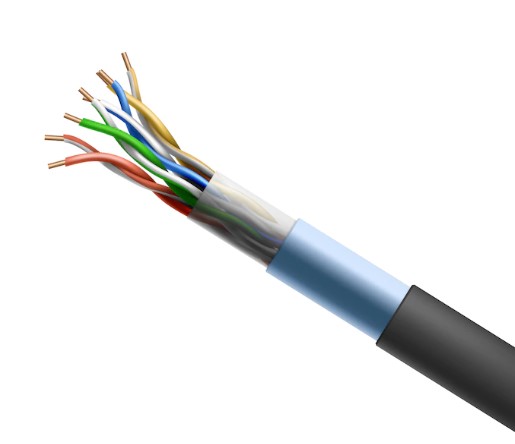If you’re looking for a comprehensive guide on network cabling course, then this is the article for you. We’ll cover everything you need to know in order to get certified, from the basics of cabling to more advanced topics like fiber optics. This guide is perfect for those who are interested in a career in network cabling or who just want to learn more about the industry. So whether you’re a complete beginner or you’ve been working with cables for a while, this article will have something for you.
What is Network Cabling?
Network cabling is the process of connecting various types of networking equipment together using cables. This can include everything from connecting a computer to a network router, to connecting two routers together. In order to properly connect all of this equipment together, it is important to have a strong understanding of both networking and electrical wiring.
While there are many different types of network cabling out there, the most common type is Ethernet cable. Ethernet cable is used to connect computers, printers, and other devices to a network router or switch. This type of cable is typically made up of four twisted pairs of copper wire, which helps to reduce interference.
If you are interested in becoming certified in network cabling, there are a few different things that you will need to do. First, you will need to complete a training program that covers the basics of network cabling. Once you have completed this training, you will then need to take and pass an exam that covers all aspects of network cabling. After you have successfully passed this exam, you will be able to receive your certification.
The Different Types of Network Cabling
There are several types of network cabling, including:
Ethernet: Ethernet is the most common type of network cabling. It uses twisted pair cables to connect devices to the network. Ethernet is a reliable and affordable option for small businesses.
Fiber Optic: Fiber optic cable is made of glass or plastic fibers that carry light signals. This type of cable is faster and more expensive than Ethernet cable. Fiber optic cable is used for long-distance networks, such as those spanning cities or countries.
Coaxial: Coaxial cable is made of copper wire surrounded by insulation and a metal shield. This type of cable is used for television and broadband internet connections. Coaxial cable is less expensive than fiber optic cable but is not as fast.
Twisted Pair: Twisted pair cables are made of two copper wires that are twisted together. This type of cable is used in telephone and computer networks. Twisted pair cables are less expensive than fiber optic or coaxial cables but are not as fast.
The Benefits of Network Cabling Certification
As the world increasingly depends on technology, those who know how to install and maintain network cabling are in high demand. Certification courses can give you the skills and credentials you need to start or further your career in this growing field.
There are many benefits that come with having network cabling course Ontario. Perhaps the most obvious is that it can lead to better job opportunities and higher wages. With certification, you can show employers that you have the knowledge and skills necessary to do the job correctly. This can help you stand out from other candidates who may not be as qualified.
In addition to better job prospects, certification can also lead to other benefits, such as access to exclusive networking events and conferences, continued education opportunities, and more. Certification can also give you a sense of pride and accomplishment, knowing that you have put in the work necessary to become an expert in your field.
If you’re interested in pursuing a career in network cabling, or if you’re already working in the field and want to take your career to the next level, consider getting certified. It could be one of the best decisions you ever make.
The Different Levels of Network Cabling Certification
There are three different levels of network cabling certification: certified cabling technician (CCT), master cabling technician (MCT), and professional cabling installer (PCI).
A certified cabling technician has the basic knowledge and skills to install, terminate, and test copper and fiber optic cable. They are also able to identify common problems with cable installations and make basic repairs.
A master cabling technician has advanced knowledge and skills in installing, terminating, and testing copper and fiber optic cable. They are also able to identify complex problems with cable installations and make expert repairs.
A professional cabling installer is a highly skilled individual who has been certified by a professional organization such as the International Organization for Standardization (ISO) or the Telecommunications Industry Association (TIA). Professional installers have the expertise to install all types of cable, including coaxial, twisted pair, optical fiber, and Ethernet.
The Cost of Network Cabling Certification
There are many factors to consider when budgeting for your network cabling certification course. The cost of the actual course, travel and accommodation expenses, and time away from work all need to be taken into account.
The average cost of a network cabling certification course is around $2000. This includes the fees for the course itself, as well as any Exam fees. However, it is important to check with the specific provider as prices can vary.
If you are travelling to attend the course, then you will need to factor in additional expenses such as flights, accommodation and transport costs. Many courses offer discounts if you book early or pay in advance, so it is worth doing some research to find the best deal.
Finally, you need to consider the time commitment involved in completing a certification course. Most courses run for around 5 days, but some can be longer depending on the level of certification being sought. You will also need to factor in study time outside of the classroom hours in order to successfully complete the exams.
How to Get Certified in Network Cabling
There are a few key steps you need to follow in order to get certified in network cabling. The first step is to find a reputable certification program that offer courses and exams for network cabling certification. Once you have found a program that meets your needs, the next step is to sign up and take the necessary coursework. After completing the coursework, you will then need to pass the exam in order to receive your certification.
Once you have received your certification, it is important to keep up with your education and stay current on new technologies and trends. In order to do this, you can attend workshops and conferences, or take additional coursework on an ongoing basis. By staying current on new developments in the field, you will be able to better serve your clients and customers.
Conclusion
We hope you enjoyed our complete guide to network cabling certification courses. If you’re interested in pursuing a career in network cabling, this is a great place to start. With the right certification, you can open up a world of opportunities in the field. Do your research and find the course that’s right for you so that you can get started on your new career path.



